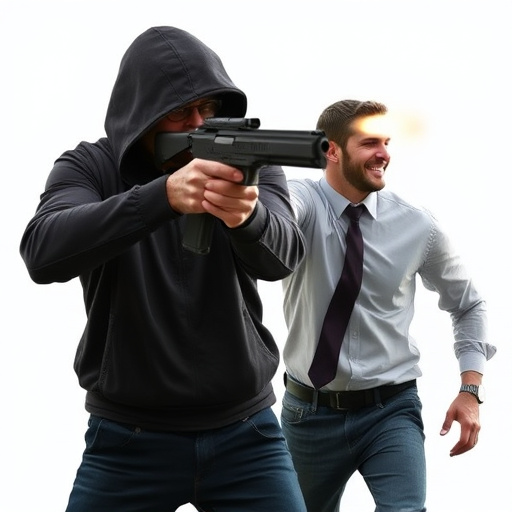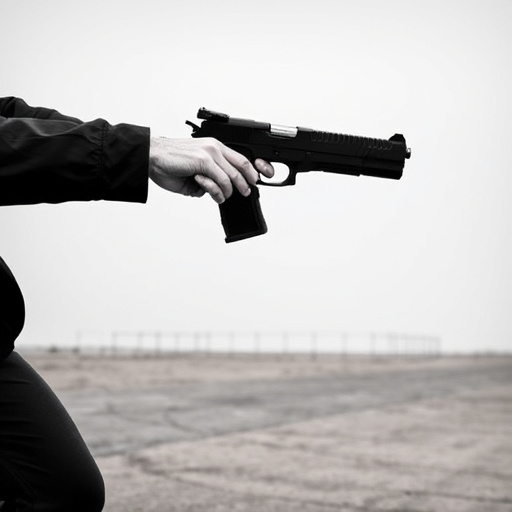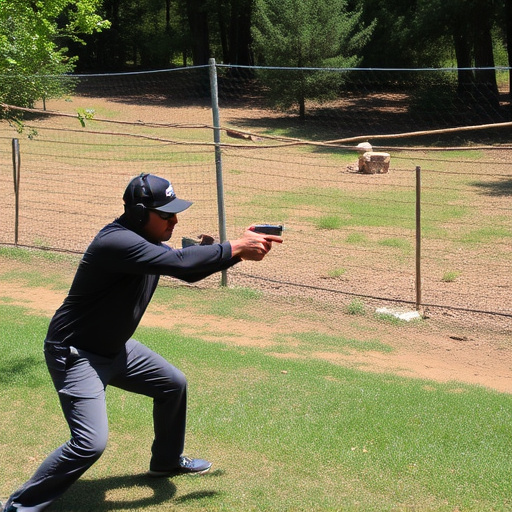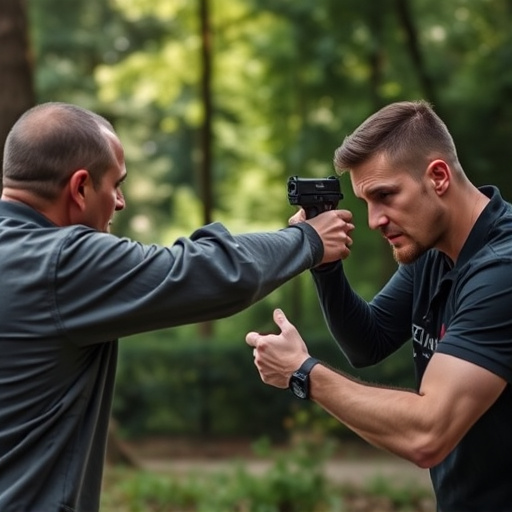Selecting the best stun guns for night security involves choosing devices with high joule ratings, reliable activation mechanisms, waterproof designs, and compact, lightweight builds. Consider advanced features like LED flashlights for disorientation. The ideal stun gun balances power, safety, convenience, and reliability for effective and safe operations in low-light environments. Key factors affecting Taser effectiveness, including model, distance, body position, individual physical condition, and environmental conditions, must be understood for optimal performance.
“In recent years, taser deployment has sparked debates regarding its impact on individuals and duration of paralysis it induces. This article delves into the intricate relationship between taser usage and paralysis, focusing on critical factors that determine how long an individual remains paralyzed after exposure. From understanding the mechanics of taser deployment to exploring methods for minimizing downtime, we offer insights into choosing the best stun guns for night security, ensuring effectiveness without prolonged immobilization.”
- Understanding Taser Deployment and Paralysis Duration
- Factors Influencing Paralysis Time After Taser Use
- Choosing the Best Stun Guns for Effective Night Security
Understanding Taser Deployment and Paralysis Duration

Taser deployment is a tactic used by law enforcement and security personnel as a non-lethal means of immobilizing individuals who pose a threat. When a stun gun, or Taser, is activated, it fires two probes connected to high-voltage electrical cables, delivering a powerful electric shock that disrupts the body’s muscle control. This sudden jolt can cause temporary paralysis, providing an opportunity for officers to secure and control a situation. The duration of this paralysis is a critical aspect to consider when evaluating Taser effectiveness, especially in night security scenarios where quick response times are crucial.
Best stun guns for night security are designed to ensure minimal time between deployment and neutralization, as rapid de-escalation is key in potential high-risk situations. The length of paralysis can vary based on factors such as the model of Taser used, the individual’s physical condition, and their body’s resistance to the shock. Understanding these variables helps security professionals make informed decisions when choosing equipment, ensuring they have the right tools for effective night-time operations while prioritizing safety.
Factors Influencing Paralysis Time After Taser Use

The duration of paralysis after Taser deployment can vary significantly and is influenced by several factors. One of the primary considerations is the model and power output of the stun gun used, with more advanced units potentially causing longer-lasting immobilization. Additionally, the distance between the user and the target plays a crucial role; closer ranges generally result in shorter paralysis times due to higher current concentration. Body position and contact points are also critical, as targeting larger muscle groups can lead to extended periods of incapacitation.
Another factor that comes into play is the individual’s physical condition and tolerance to pain. Fatter individuals or those with lower pain thresholds might experience longer durations of paralysis compared to others. Environmental conditions, such as temperature and humidity, can also impact the effectiveness and duration of stun gun deployment. In colder climates, muscle stiffness can prolong the immobilization effect, while in hot and humid environments, perspiration may reduce contact resistance, potentially shortening the disruption period. When considering the best stun guns for night security, understanding these factors is essential to ensure optimal performance and safety during use.
Choosing the Best Stun Guns for Effective Night Security

When considering the best stun guns for night security, several factors come into play. The primary concern is ensuring the device delivers a powerful enough shock to incapacitate an intruder while providing a safe, non-lethal option. Look for stun guns with high joule ratings (typically 4-15 million) and reliable activation mechanisms. Waterproof designs are also advantageous for outdoor use in various weather conditions.
Additionally, the size and ease of carry are essential for effective night security. Compact, lightweight stun guns that fit comfortably in a pocket or clip easily to a belt are ideal. Some models even offer advanced features like LED flashlights, which can disorient an attacker and improve visibility during nighttime encounters. Ultimately, choosing the best stun gun involves balancing power, safety, convenience, and reliability to suit your specific night security needs.
In understanding the impact of taser deployment, recognizing the factors influencing paralysis duration is crucial. This article has explored the intricacies of taser usage and its effects on the body, with a specific focus on the time individuals remain paralyzed. When considering the best stun guns for night security, it’s essential to weigh these factors to ensure both effectiveness and safety. By choosing the right stun device, you can fortify your personal or communal night security measures, contributing to enhanced protection and peace of mind.
